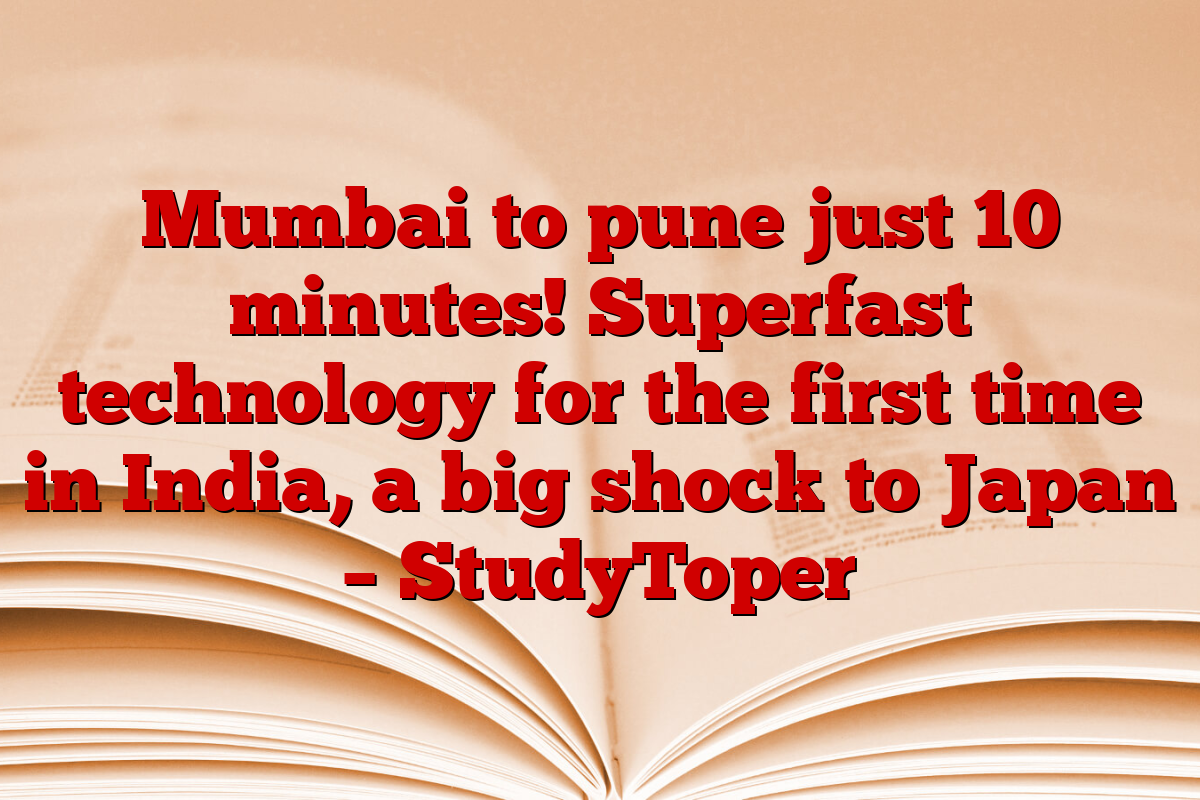A major change in the transport sector in India is going to come. Preparations are being made to change both travel time and experience through modern techniques like Mumbai-Pune Hyperloop Project and Bullet Train. These projects will not only save time, but will also prove to be environmentally friendly and economically beneficial. Let’s know in detail about these projects.
Mumbai-Pune Hyperloop Project: Future Tour
Hyperloop technology is a system in which pods such as capsules are run in low pressure tubes. These pods can reach a speed of more than 1,000 km/h. This project travel time between Mumbai and Pune promises to reduce the time from 3 hours to only 25 minutes.
Overview of hyperloop project
| Speciality | Description |
| Travel time | 25 minutes |
| motion | 1,100 km/h (maximum) |
| Travel cost (per ticket per ticket) | ₹ 1,000- ₹ 1,500 |
| Technology | Low-pressure tube and magleve track |
| Project cost | $ 8-9 billion (second phase) |
| Start goal year | 2029 |
| First stage | 11.5 km pilot track |
Hyperloop features
- Superfast Speed: Hyperloop speed will be faster than airplanes.
- Security: Pods will be controlled by autonomous software.
- Environmental friendly: Carbon emissions will decrease.
- Point to Point Travel: Direct journey without any intermediate stop.
Mumbai-Ahmedabad Bullet Train: India’s first high-speed rail
High-speed rail network in India is starting with the Mumbai-Ahmedabad bullet train. The project is based on the famous Shinkansen technology of Japan.
Overview of bullet train project
| Speciality | Description |
| Travel time | 2 hours (Mumbai-Ahmedabad) |
| motion | 320 km/h |
| Technology | Japanese shinkansen |
| Project cost | ₹ 1.60 lakh crore |
| Start goal year | 2030 |
Bullet train characteristics
- Changes in design according to Indian weather and geography.
- Advanced signaling system for maximum security.
- Indigenous construction under “Make in India” initiative.
Hyperloop vs. Bullet Train: Who Better?
| Speciality | Hyperloop | Bullet train |
| motion | 1,100 km/h | 320 km/h |
| Travel time | 25 minutes (Mumbai-Pune) | 2 hours (Mumbai-Ahmedabad) |
| Technology | Low-pension tube and magleve track | Shinkansen railway technology |
| Environmental impact | Low carbon emissions | Medium carbon emissions |
| Cost | ₹ 1,000- ₹ 1,500 per ticket | ₹ 3,000- ₹ 5,000 per ticket |
Benefits from these projects
- Time saving: a huge decrease in travel time.
- Economic Development: Promotion of trade and tourism.
- Environmental protection: Decreased greenhouse gases.
- Modern Technology: Will make India globally competitive.
Challenges and solutions
Hyperloop:
- challenge: To meet technical and safety standards.
- Solution: Certifying technology through pilot project.
Bullet Train:
- challenge: High cost and delay in construction.
- Solution: Use of indigenous construction and Japanese expertise.
Disclaimer:
This article is based on the development in the transport sector in India. However, the hyperloop is currently in the test phase and may take time to apply it commercially. At the same time, the bullet train project is also lagging behind its scheduled time.
Both projects promise to take India’s future to new heights in the transport sector, but their success will depend on many factors.
